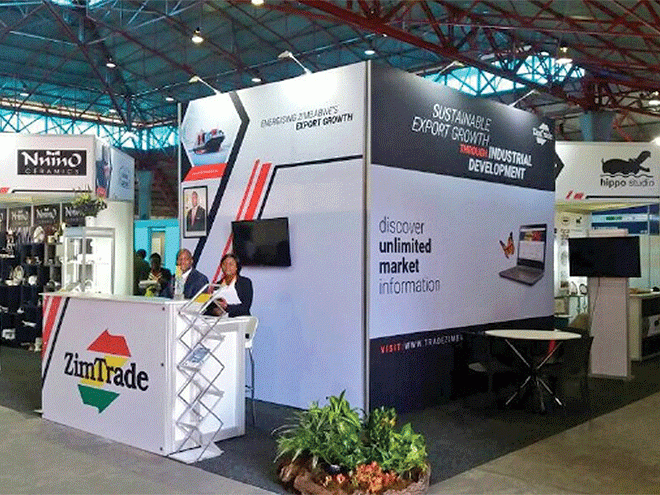
Accelerated economic growth in Africa since 2000 has increased the opportunities for enhanced trade, while the continent is also looking to step-up integration between its regions to further boost growth and job creation.
BY KUDZAI GOREMUSANDU

To develop effective trade patterns, Africa must embrace structural and regulatory reforms and enhance financial integration to accelerate efforts that have led to increased exchanges with emerging countries in the rest of the world and between its own countries and regions.
African countries must foster macro-economic stability and improve the investment environment to strengthen the role of pan-African banks in facilitating trade finance and boosting capital markets. Success in stimulating trade and growth depends on the policy and investment climate, depth of financial integration and commitment to reform.
Africa’s trade with the rest of the world has remained high, except with the United States. From 2000 to 2008, Africa’s trade increased by an annual average of 16%. Because of the 2008-9 global financial crisis, trade fell sharply by 24% from that period. Since 2010, Africa’s exports have recovered, growing by an annual average of 8,5%. Trade with the United States has persistently declined, however.
In 2015, trade with the United States fell to $70,5 billion from a peak of $ 124,6 billion in 2011, an 11% decline.
Historically, oil, gas and petroleum products have dominated US imports from sub-Saharan Africa.
In 2007, these accounted for 93% of US imports. By 2013 the figure had declined to 67% as the United States stepped up its campaign for energy self-sufficiency and increased production of domestically produced oil to avoid imports.
- Chamisa under fire over US$120K donation
- Mavhunga puts DeMbare into Chibuku quarterfinals
- Pension funds bet on Cabora Bassa oilfields
- Councils defy govt fire tender directive
Keep Reading
Africa’s exports to emerging economies are dominated by China and mainly comprise oil, metals and other primary products. This exposes the continent to China’s shifting economic model from investment and export to an economy based on domestic consumption and services. This could slow demand for Africa’s products and affect long-term growth.
Currently, China accounts for 27% of sub-Saharan Africa’s global exports, with primary commodities representing about 83% of exports to China according to Pigato and Tang, 2015. Trade between African regions is also growing, though it remains low compared to other parts of the world. In 2000, intra-regional trade accounted for 10% of Africa’s total trade. In 2014, it was 16%.
This trade is mainly in manufactured goods, which are less susceptible to price shocks. Manufactured products account for 60% of total regional trade according to African Development Bank (2015), Fostering Development through Trade Finance.
Africa’s improved investment climate has provided opportunities for increased investment from inside and outside Africa. Benin, Kenya, Mauritania, Senegal and Uganda were among the top 10 most improved economies in 2014-15 in areas tracked by the World Bank’s Doing Business 2016 survey. Together, they implemented 39 regulatory reforms making it easier to do business.
Sub-Saharan Africa accounted for about 30% of the regulatory reforms making it easier to do business in 2014-15, followed by Europe and Central Asia.
In Africa, the Tripartite Free Trade Area (TFTA) and the proposed Continental Free Trade Area (CFTA) are designed to spur intra-regional trade and investment. The TFTA takes in the 19-nation Comesa bloc, the five-country East African Community (EAC) and 15-member Sadc.
This makes it the largest free trade zone in Africa’s history, accounting for over 58% of continental output, 48% of its countries and 57% of Africa’s population. The TFTA also accounts for 25% of intra-regional trade, where other blocs account for an average of 15%.
Roles of trade bloc — TFTA
To boost regional trade, the TFTA focuses on
*Harmonising existing regional trade agreements; *Facilitating the flow of goods between countries and along transport corridors *Improving links between members by developing cross-border infrastructure *Allowing free movement of business persons.
Development of sound financial markets in Africa is important to facilitate trade. Africa has more than 25 stock markets. However, many are fragmented, illiquid and a little active. A major exception is the Johannesburg Stock Exchange (JSE), which accounts for nearly 65% of Africa’s total market capitalisation.
Investment within Africa has been led by South Africa, Nigeria and Kenya, mainly in banking, retail and telecommunications. South Africa is the top investor in Southern Africa. About 80% of foreign investment into Botswana, Lesotho, Namibia and Swaziland comes from South Africa (World Bank, 2016).
Trade growth has accelerated in Africa since 2000 at an average annual rate of 5%. The following factors explain this performance:
*Greater political stability: The number of violent conflicts has decreased since the turn of the century, boosting political stability.
*Improved macroeconomic conditions: Prudent fiscal and monetary policies and debt relief have helped contain fiscal deficits and lower inflation. Government reforms have also improved the business environment.
*Greater public investment in infrastructure: This has helped some countries without natural resources, such as Ethiopia and Rwanda, to attain growth of 8% or more.
*High commodity prices: During the 2000s, Africa’s resource-rich countries have benefited from greater demand for commodities, especially from China and other emerging economies. The recent decline in prices has scaled back growth however.
*Foreign direct investment and other financial flows and domestic demand: These factors have responded strongly to a good policy environment and together they have played a key role in Africa’s growth. Yet, the potential of intra-African trade has not been fully exploited.
Kudzai Goremusandu is a strategic, innovative, dynamic, goal getter, enterprising financial and leadership consultant. He is the founder of Africa Leadership Insights Institute. Kudzai holds an award for effective media communication from the University of Zimbabwe. Kudzai is based in Harare, Zimbabwe. He can be contacted at [email protected]












